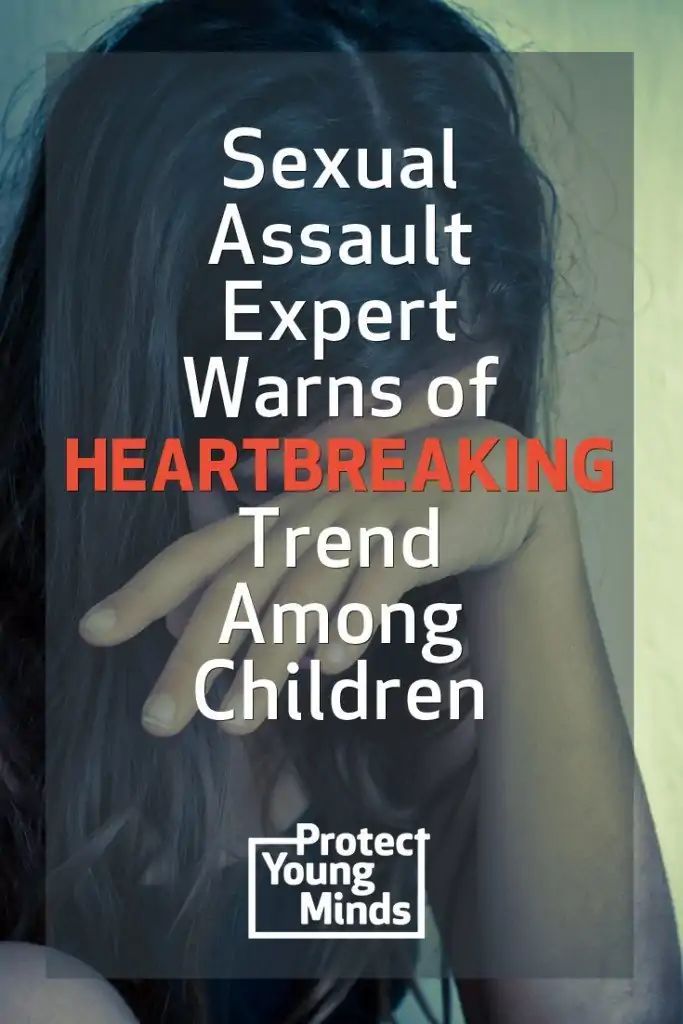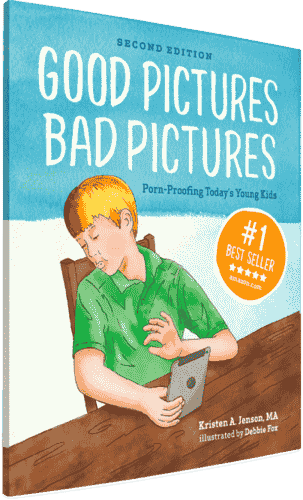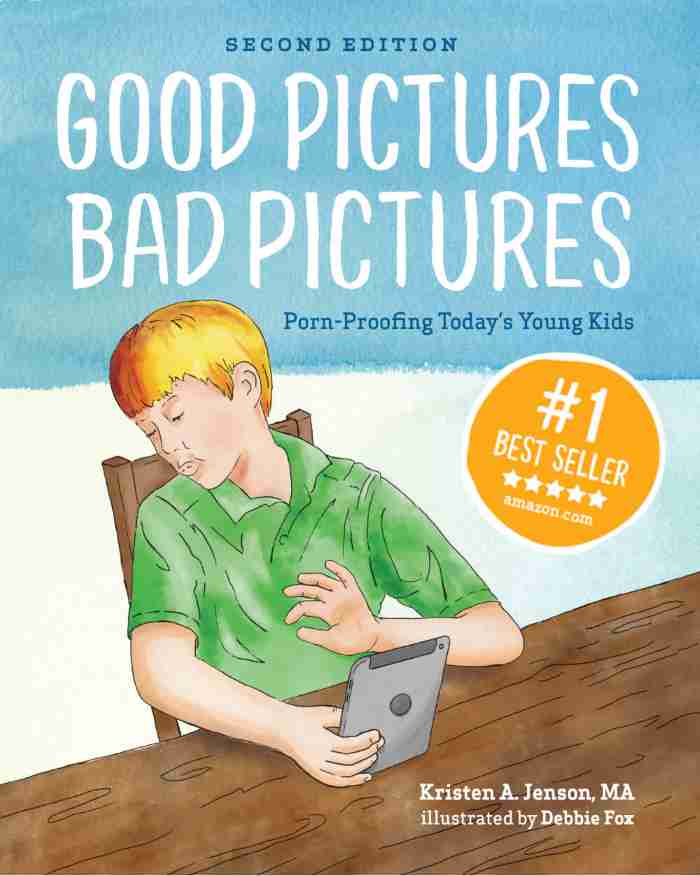

Sexual Assault Expert Warns of Heartbreaking Trend Among Children
I am a Sexual Assault Nurse Examiner (SANE) at a large children’s hospital. My job is to collect evidence, look for injuries, provide support, and testify in trials for victims of sexual assault. If you’ve ever heard of a “rape kit”, SANE nurses are the ones who collect the evidence that goes inside of these kits.

I remember distinctly where I was sitting several years ago when my gut told me something was off. I have learned from more experienced nurses that “trusting your gut” often gives insight into unspoken but vital pieces of a situation. I was talking to the parents of a 5-year-old girl who had been sexually assaulted by her 12-year-old brother. The father of the children stumbled upon the assault, so there were no questions as to what kind of violation took place. As the tearful parents grieved and asked, “Why would our son do this?” my mind pondered those same questions.
Why would kids abuse other kids?
Here is the reality - children learn these types of sexually aggressive behaviors. Children don’t instinctively act out sexual violence on each other. They don’t instinctively want to violate or push sexual boundaries with their siblings or younger children. These things are learned. Of course, some children who act out in sexually harmful ways have been victimized themselves, but my intuition told me that there is an unspoken factor fueling many assaults.
Many sexual assaults occur because of what young perpetrators have been exposed to via screens. Children watch violent sexual acts, with no previous direction or insight into what is normal, healthy sexual behavior, and then perform these sexual acts on other children. This is extremely concerning as pornography is more accessible and violent than ever. Which correlates with the rise of child-on-child sexual abuse.
As my mind raced over these thoughts, the mother of the children blurted out,
“Well, we have found a lot of porn on our son’s phone lately. Do you think that has anything to do with this?”
I knew in that moment that these two things were completely intertwined.
The unexpected perpetrators
When I became a SANE nurse, I thought the typical perpetrator was most likely going to be a creepy old man in his 60s who lured kids into his basement with lollipops, but I was so wrong. The biggest age range of perpetrators that I see in my hospital are children. In fact, for the third year in a row, our biggest age range of people committing sexual assaults are children ages 11-15 years old.
Let that sink in for a minute.
These kids aren’t even old enough to drive. Yet they are committing the most sexual assaults in our region. To put this in an even better perspective, my hospital sees one of the highest volumes of sexual assault victims in the United States. So our numbers are large, meaning these young perpetrators are not an anomaly.
I was alarmed by the number of 11, 12, and 13-year-old perpetrators I was seeing. I started looking through our past sexual assault victim’s stories and found hundreds and hundreds of records of sexual assault survivors who were perpetrated on by another child. Pornography is often a main factor, and sometimes the only factor, that influenced a child to act out in a sexually harmful way.
Related: Three Ways to Guard Against Child Sexual Abuse
The truth about pornography and child sexual abuse
As I have studied our data, and seen more and more patients, I realize that it’s imperative that we understand the way that pornography is creating devastating effects for children across our country.
The children that I see are not in a vacuum. Stories of child-on-child sexual abuse are ringing out all over the world. The trend is growing rapidly. With pornography being so widespread and easily accessible, more and more children are viewing and subsequently acting out what they see on vulnerable children. Often their younger relatives. It’s not just young boys - we see young girls who are perpetrators as well.
The solutions are not quick or easy. There’s shame involved with families who have a child sexually act out on another child. Most families do not want to admit that this tragedy has occurred within their family. There are not many specialized therapy groups or any court mandated services that cater to this issue, so there are limited resources for healing. To compound the issue, we live in a culture that continuously normalizes pornography and refuses to acknowledge the ugly truth that it fuels sexual assault and rape culture.
In these quiet moments of tragedy in the Emergency Department, while the dust settles and families try to make sense of what is happening, I hear the truth. I clearly see the correlations. I hear the confessions that pornography influenced child sexual abuse. I hear the truth that pornography was created of a victim, shown to a victim, or was the direct reason why a child acted the way he or she did.
Related: The 3 Big Red Flags of Sexual Abuse
Pornography normalizes violence
I have seen things that I cannot write about, violence that is hard to fathom, let alone explain, moments that have left me nauseated and in tears. Things are inflicted upon beautiful, innocent children at the hands of other children. Brutal assaults are carried out by the hands of teenage boys who believe that sexual violence is “normal.”
I see kids who think that anal and oral sex are normal before you’ve even gone through puberty. I come face-to-face with stories about kids who do not listen when a victim repeatedly tells them “No!” Why? Because they’ve seen the violence, the strangulation, the slapping, the name-calling of women a thousand times in pornography and they think that it is “normal.”
Then they act it out, leaving behind a wake of destruction for themselves and their victims.
Your kids can build powerful pornography defense skills by sitting beside you to read Good Pictures Bad Pictures: Porn-Proofing Today's Young Kids and learning the CAN DO plan.
[[CTA]]
Many victims of this rising trend
There are so many heartbreaking elements to this subject. And it’s important to remember that the perpetrators are also victims. While I do not condone their actions and stand with victims of sexual assault, children who are acting out sexually are also victims of a culture that has not protected them. A culture that allows them to be exposed to sexual violence while calling it “normal.” A culture that does not offer services for children who are viewing pornography and who are acting out. A culture that changes childhood from a time of adventure, innocence, and wonder and fills it with airbrushed naked bodies and violent sexual acts. Too many kids in this generation have been sexualized since they could look at a screen.
The United States is seeing thousands upon thousands of our children who are being sexually assaulted every year. Which means thousands of children are deemed perpetrators every year. It has been estimated that one-third to 66% of all perpetrators of child sexual abuse are children themselves (17 years old and younger.) This reality has massive ramifications on both sides of the equation in terms of mental illness and adverse health outcomes.
What will the world be like in 20 years if an entire generation of adults have experienced sexual violence and trauma at the hands of each other?
Watch Heidi Olsen talk with Protect Young Minds founder, Kristen Jenson, at the Coalition to End Sexual Exploitation Summit.
https://www.facebook.com/ProtectYM/videos/1025885260902569/
We can do something about child-on-child sexual assault
My gut instinct proved to be right. Pornography is fueling one of the worst secrets of our time. Childhood innocence is being destroyed at lightning speed.
The good news is that now that we are aware, we can take action and change the trajectory of this terrible trend now! Here are some things you can do:
- If a child says they were assaulted, believe them! Research shows that children (and adults, for that matter) do not lie about sexual assault. They should be met with responses like, “You’re really brave for telling me that. Thank you.”
- One of the best things that a parent can do is to respond with compassion. Whether your child was the one assaulted or your child was the one who has been struggling with pornography and acting out, they should be met with grace and acceptance. When shame is taken out of the equation, there are much better chances of children healing, growing, and speaking up in the future.
- Assure them that you are going to help them through this for as long as it takes.
- Protect the child who has been assaulted. Never put them in situations with the perpetrator. To interact with the perpetrator is unsafe and re-traumatizing.
- Get professional help. Kids’ brains need help sorting out trauma and early sexualization. Therapy is needed for both children who have been assaulted and children who have acted out in harmful sexual ways.
- Talk to children about the dangers of pornography. Children often accidently stumble upon porn while searching innocently online. Talk to your children and make it safe for kids to speak up when they see something. Check your children’s screens and devices frequently. Children who habitually look at porn are more likely to act out. Know what your kids are looking at.
- Prepare your children to protect amazing bodies - their own and others. Teach them that other people should never be touching or taking pictures of their private areas. At the same time, teach them they should never touch or take pictures of others’ private areas.
- Educate others about online safety. Raise awareness of the correlation between sexual assault and pornography. Talk about keeping kids safe. The more people understand, the better chance we have to protect our kids.
My last piece of advice is, “Go with your gut.” If something doesn’t seem right with your child, it’s not. Create a safe space where your child knows they can disclose that they have been abused or are struggling with what they’ve seen online. Assure your children that they will be met with kindness and protection rather than shame or denial. Safety and validation from a caregiver make all the difference in the world in a child’s healing process.
I know this topic is heavy and overwhelming. The fact is, if we don’t know, we can’t change anything. We need to realize the insidious world that pornography is creating for our kids. In fact, it is creating a significant public health crisis in our society.
This rising trend does not have to continue this way! We can provide services to help children heal from sexual trauma. We can treat young offenders. We can prepare children to reject pornography and abuse - now. The sooner we teach them, the safer they will be. Please share this article and help all those who care for and influence children be prepared to take action on this issue.



Good Pictures Bad Pictures
"I really like the no-shame approach the author takes. It's so much more than just 'don't watch or look at porn.' It gave my children a real understanding about the brain and its natural response to pornography, how it can affect you if you look at it, and how to be prepared when you do come across it (since, let's face it... it's gonna happen at some point)." -Amazon Review by D.O.






.png)

